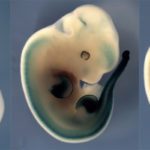Link to Pubmed [PMID] – 9608739
Transgenic Res. 1998 Mar;7(2):113-21
In order to identify regulatory elements that direct widespread in vivo expression of a linked gene, we have examined one of the human aldolase A alternative promoters, the ubiquitous pH promoter, which is active in most foetal and adult tissues. We have used the pH promoter region to drive expression of an heterologous CAT reporter gene in transgenic mice. We show that a short 820 bp pH promoter fragment is able to confer a ubiquitous and reproducible activity pattern on the CAT reporter gene in most of the transgenic lines analysed, with a particularly high level of expression in adult skeletal muscle. Activity of this transgene was detected from early embryonic stages. Therefore, this pH promoter region appears to be a powerful tool to direct ubiquitous and early expression of a transgene in vivo. Deletion analysis revealed that: (i) the region between -651 and -369 bp relative to the pH promoter transcription start site includes DNA elements capable of overriding effects of the surrounding chromatin at the integration site, (ii) the region between -285 and -211 bp is involved in pH promoter tissue-specific expression pattern in skeletal muscle and/or nervous tissues, (iii) the region located between -211 and -108 bp is necessary for its ubiquitous and muscle-predominant activity and (iv) the most proximal region downstream from -108 bp is still sufficient to confer an activity in brain and lung.

